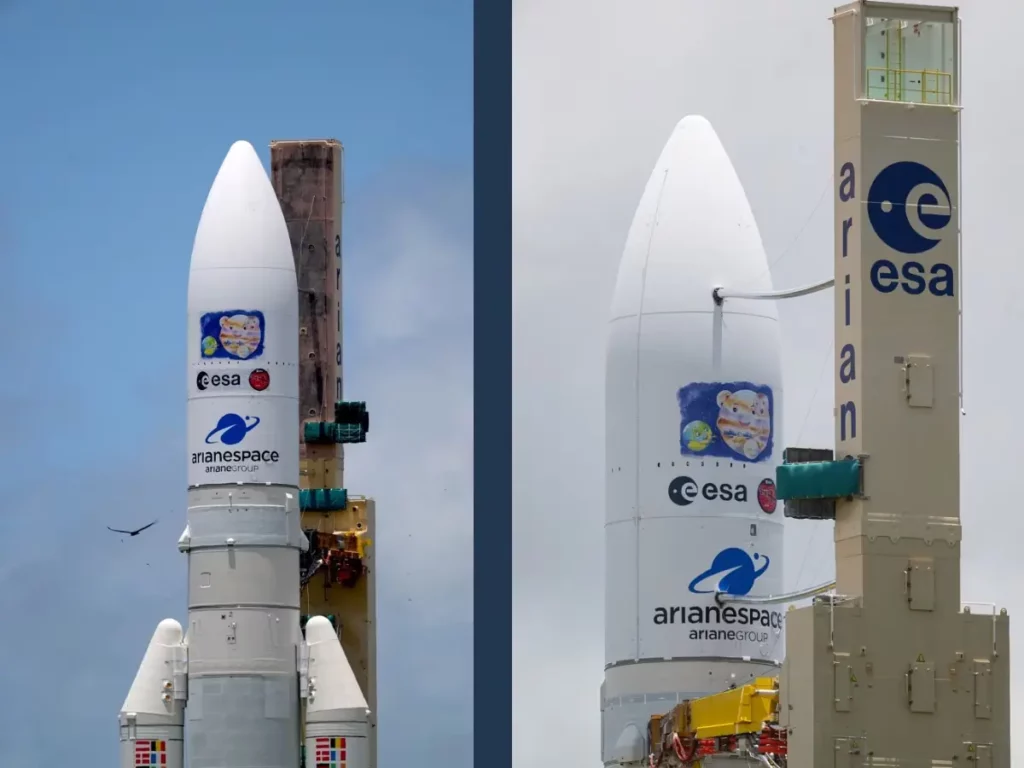The European Space Agency (ESA) is preparing to launch the Jupiter Icy Moons Explorer (Juice) mission on Thursday (April 13) using an Ariane 5 rocket from its spaceport in French Guiana. The project, which is scheduled to arrive at Jupiter in 2031, aims to conduct a comprehensive examination of the largest planet in the Solar System and its icy moons, which may contain habitable environments.

The European Space Agency has successfully integrated Ariane 5 for its Juice mission beyond Earth’s atmosphere. The Jupiter ICy Moons Explorer (Juice) mission will launch in pursuit of signs of life on Jupiter’s three largest moons.
The Juice spacecraft will embark on an eight-year voyage to Jupiter and its moons from the European spaceport in French Guiana. The mission is scheduled to launch at 13:15 BST (5:45 pm IST) aboard Europe’s most potent rocket, the Ariane-5. You can also view the launch on Twitter and the official website.
After approximately thirty minutes, Juice will separate from the rocket and commence its journey through the space vacuum. The spacecraft will travel via Venus, Earth, and the Earth-Moon system in order to reach its destination in 2031.
The spacecraft will observe Jupiter and its three largest moons, Callisto, Europa, and, in particular, Ganymede. The moon’s submerged waters may disclose whether or not life can develop in a variety of conditions throughout the universe. The objective is to determine whether the moons are habitable and whether it is possible to live alongside giants.
The primary concern, according to the European Space Agency, is the formation of habitable planets surrounding gas giants. Earth is the only known planet in the Solar System to have witnessed the emergence of life. Is the origin of life unique to our planet, or could it have occurred elsewhere in the Solar System – or even beyond?” ESA said.
The spacecraft will investigate the oceans, ice casings, compositions, surfaces, environments, and activities of Ganymede, Europa, and Callisto, as well as Jupiter’s atmosphere, magnetic environment, ring system, and other satellites.
The spacecraft will be powered by ten cross-shaped solar panels. These cover approximately 85 square metres. Juice carries state-of-the-art sensors, including the most potent remote sensing, geophysical, and in situ payload complement ever launched to the outer Solar System.